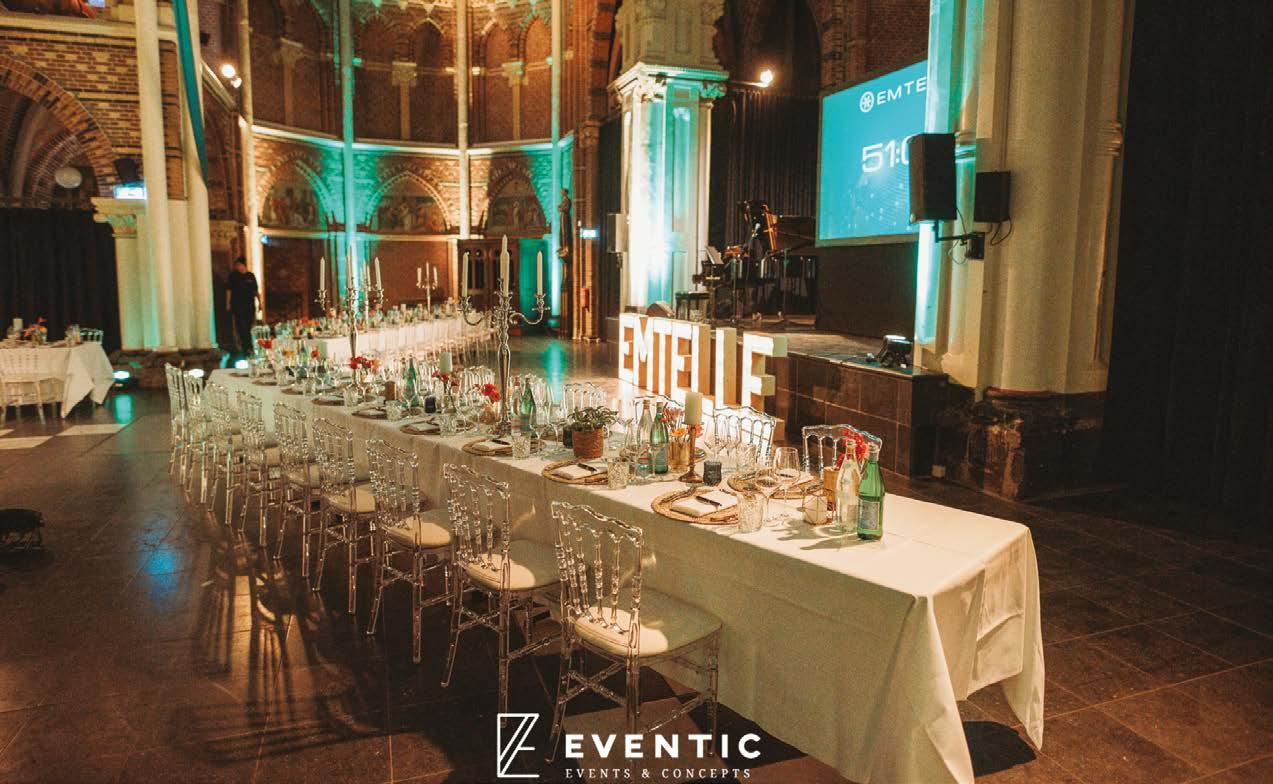
21 minute read
Top Dutch Event Planning: An Exceptional Experience
An exceptional experience TOP DUTCH EVENT PLANNING
Are you hoping to make your next event one to remember? Then take a look at our guide to the Netherlands’ finest event planners.
Photo: Eventic
Easyfairs. Photo: Seijbel Photography
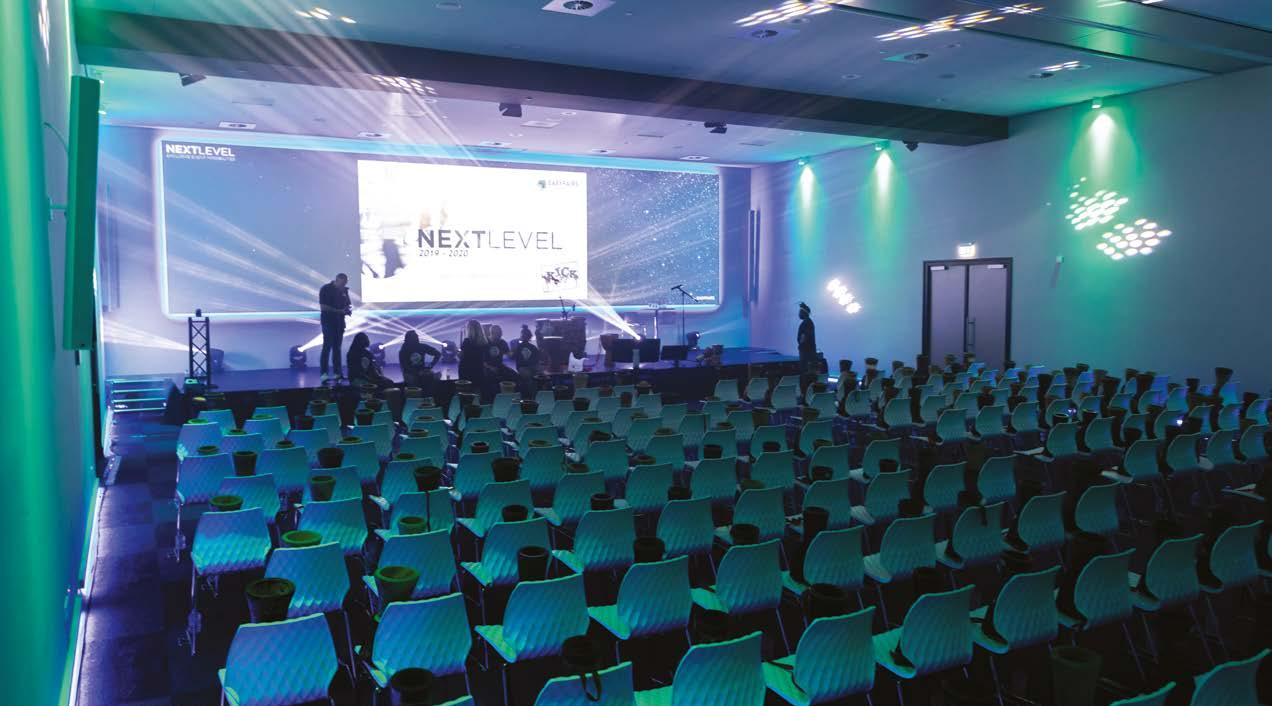


Creative corporate events tailored to boost your business
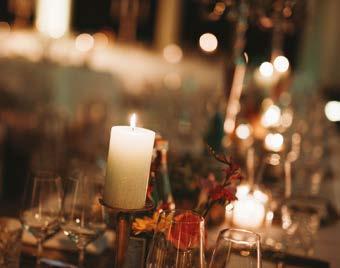
TEXT: LAUREN WALKER | PHOTOS: EVENTIC AND DENIS MUTLU
When done right, hosting a corporate event can give a big boost and great marketing opportunity for businesses, whether the occasion is to celebrate employees or to host trusted or new clients. For Inge de Jong, from Dutch event planning firm Eventic, this belief is central to her work, as she skilfully tailors events to meet her clients’ needs, ensuring every event is unique.
With a goal to add more spice to the corporate event industry, Eventic looks to incorporate creativity at all levels. It keeps up to date with the latest trends in terms of concepts, decoration and venues, whilst remaining aware of sustainability. Eventic expertly assists international businesses hosting events in the Netherlands and firms looking to organise events abroad. Although Eventic was launched a year and a half ago, there are already plans to open other branches across Europe to further cater to international business. Eventic is run in a modular structure where it works alongside a strong and reliable network of specialised caterers, decorators and venues globally, and by choosing the right professionals for the right event, the firm offers a unique, hassle-free experience. From organising a high-level entertainment night including acrobats in an ancient church in Amsterdam for customers from ten different nationalities, to hosting a Polish SEAT branch’s twoday conference near an astounding lake in

the Netherlands’ Groningen, every event is unforgettable.
Commenting on what she hopes businesses will get from Eventic’s services, Inge says: “Events are a great way to market your business and the importance of direct client communication is something which cannot be underestimated. If businesses organise these events smartly, it can make a big difference, and that’s where we come in!”
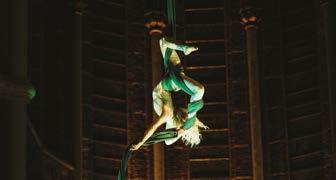
To find out more or to book a free consultation with Eventic, visit: eventic.nl


Photo: Hans Morren

Raising events to the next level
TEXT: BAS VAN DUREN | PHOTOS: SEIJBEL PHOTOGRAPHY
xxx Not many event organisers can call themselves versatile and follow through on that very promise. Easyfairs, however, is one of them, as the Dutch-based company has organised events in 14 different countries, runs five regional hubs and stands out as a business that is capable of handling multi-format, b2b and public events such as conventions, seminars, award shows, product presentations and so much more. With its newest 6,000-square-metre venue, ‘Next Level’ in Gorinchem (a half-hour drive away from Rotterdam), Easyfairs is setting its sights to the future, offering live events with a panache that is unrivalled.
Operating as a fully integrated and scalable platform, Easyfairs has the pleasure
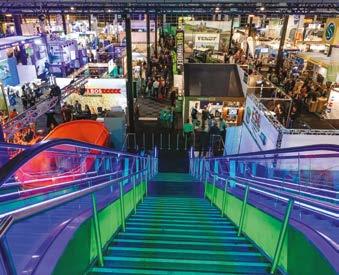
of organising events from 200 people upwards to 20,000. Having several event locations, Easyfairs is capable of handling every aspect of its live-experiences; from staff to catering, to the construction of stands, audio, video, hosts, all the while capable of generating data that can provide better insight for optimal return on investment and return on time. Examples of the more large-scale events that Easyfairs is known for are trade fairs such as ‘Horticulture’, one of the most important events in the greenhouse horticulture industry, and fairs for the maritime industry, too.
But Easyfairs wouldn’t be themselves if they were always reaching for higher goals. That is why CEO Jeroen van Hooff is rightfully ecstatic with their latest

addition: ‘Next Level’. Van Hooff: “Next Level is the first floor of our existing event space in Gorinchem and as the name implies, we really want to take events to the next level with this new hall. We’ve removed several walls to create this large open, flexible space that has all the latest innovations, providing a 12-metre-wide screen, cinema-quality sound and dynamic led lighting that can be programmed to match a theme or a company logo.”
Van Hooff continues: “Though we can fully manage an event, it’s also an option to rent and have a turn key event, corporate event etc. Next Level is built with corporate social responsibility in mind and thus we reduce waste as much as we can and have added as much green as we could. With 6,000 square metres, it is possible to organise just about anything at Next Level. For example, the combination of a corporate presentation and a party is always an option, and we’re currently looking for partnerships with surrounding hotels, taking away the need for having to drive after an event.”

What can the Amstelzijde Kliniek do for you?

TEXT: ARNE ADRIAENSSENS | PHOTOS: AMSTELZIJDE KLINIEK
The days in which cosmetic medicine was a laughing stock lie far behind us. Today, plastic and cosmetic practitioners are miracle workers in optimising people’s potential and boosting their self-esteem. Nonetheless, the sector knows big quality differences and you must, therefore, be careful which doctor you put your confidence in. At the renowned Amstelzijde Kliniek, however, you are in safe hands. Doctor Hayri Hortoglu has over 20 years of experience and was one of the Netherlands’ pioneers in the field of injectables. Today, he and his team are a top reference in this field, as well as highly skilled in skin therapy and plastic surgery. “There are many misconceptions about what we do,” explains Dr Hortoglu. “People often think cosmetic medicine is an ‘on-demand’ treatment; that we do whatever our clients ask us to, but that is far from true. At the Amstelzijde Kliniek, we won’t perform any procedure that we don’t believe will benefit our client. In fact, what we are most praised for is our ability to work as naturally as possible. We improve people’s existing features and accentuate their strengths. We don’t make people, but we improve individuals!”
Botox and fillers Founded ten years ago, the Amstelzijde Kliniek was one of the first cosmetic

medicine institutions in the Amsterdam region that focused solely on injectables. To date, that is still its foremost speciality. “Injectables are way more versatile than most people think. They are not just used to straighten out wrinkles or to give lips more volume, but they also play a part in performing so-called liquid facelifts or even earlobe rejuvenations.”
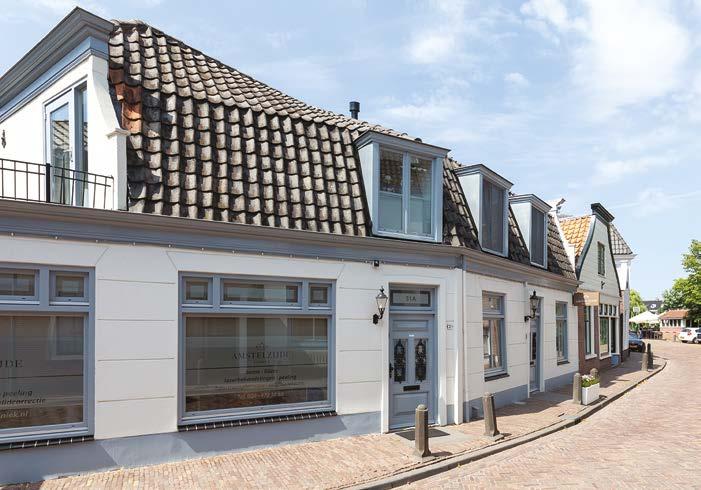
While the Amstelzijde Kliniek uses eight different sorts of injectables, they categorise them into two different types. Most famous are the Botuline Toxine treatments (better known as Botox). This is a muscle relaxer which helps you get rid of wrinkles of the forehead and crow’s feet but can also be used to give your jawline or neck its youthful glow back, for example. Secondly, you’ve got fillers. “As you grow older, you lose more and more baby fat, because of which your skin might sag or hang a bit. By filling up these spaces, you regain your natural, healthy curves.”
Injectables, skin therapy and plastic surgery Today, the Amstelzijde Kliniek does way more than just injectables, though. As experts in cosmetic medicine as a whole, the team also counts an in-house plastic surgeon and a team of skin therapists. “We provide custom-made solutions for people who want to look better, and that can’t always be done with injecta

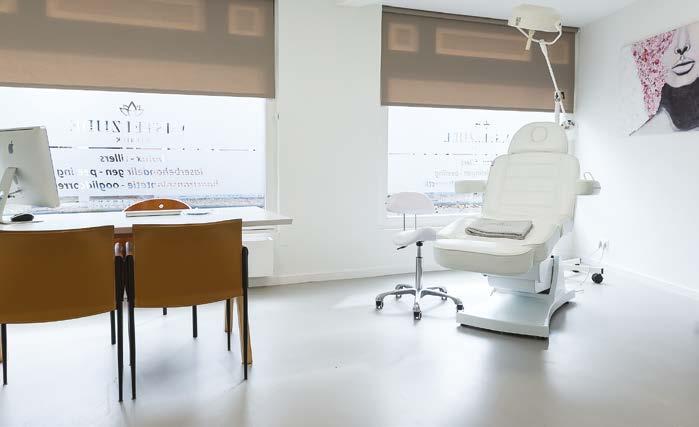
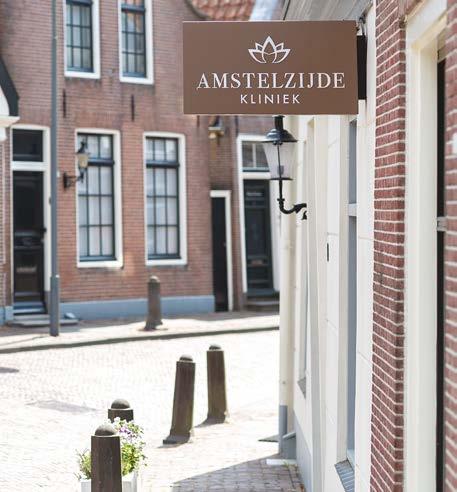



bles alone. By adding skin therapy and plastic surgery into the mix, we create a new range of possibilities. Sometimes, a combination of a bit of filler, some laser therapy and a surgical intervention solves a problem better than treating it from one angle only.” As the surgical procedures require highly-specialised equipment, the actual surgery takes place in a nearby hospital. Here, as well, the Amstelzijde Kliniek guarantees the same top-notch service and quality as in its proper clinic.
Personal preparation process Holding ethical and medical values and guidelines in the highest regard, the Amstelzijde Kliniek’s clients go through a thorough, personal and non-binding preparation process before starting the actual cosmetic procedure. “First, we get you an appointment for a consultation and register you on our system. Here, we also double-check your age, as we don’t treat minors. During this free consultation, we listen to your wishes and propose the best possible course of action for your specific needs. We also ask about your medical history to prevent any unpleasant surprises later. If both you and we are convinced that a certain treatment (or combination of treatments) is the way to go, we plan the actual procedure. If one of us is not quite sure, however, we might suggest a cooling-off-period or a second consultation before proceeding.” Dr Hortoglu and his team always discuss the options of less-invasive cosmetic procedures or even the option of not intervening at all, as well. “Cosmetic medicine is not about making profit. We want to make our clients feel happy and confident. For that, it is paramount that they know all their options.”
State-of-the-art material In its skin therapy practice, the Amstelzijde Kliniek uses nothing but the best, stateof-the-art material. As a board member of the Dutch Aesthetic Laser Association and a founding member of the Dutch Association for Cosmetic Medicine (NVCG), Dr Hortoglu is an expert on innovative technologies in the field. “That doesn’t mean we follow every trend that pops up. Before we invest in something, this technique has to prove itself. Trends
are volatile and, as we work with people, we don’t want to take any unnecessary risks, we only use solid, trustworthy technologies.” And those, the Amstelzijde Kliniek has aplenty. Each of them serves a different purpose, from skin improvement to tattoo removal.
Transparency The clientele of the Amstelzijde Kliniek is a very diverse group. Although the lion’s share is female, more and more men are finding their way to the clinic, as well. The age of patients also varies from 20 to 93. “We also have return customers aplen

ty. Sometimes, I jokingly call myself a cosmetic general practitioner.” The main reasons why people keep coming back are the personal service, the high level of expertise and their transparency. During the first consultations, the doctors inform every client about what’s awaiting them and exactly how much it will cost. In fact, the clinic has published a complete price list on its website, as well. “Knowing my clients longer and better does, also, help me to assess their expectations with more precision. You know what is important to them and how you can improve their lives. And that is what satisfies me the most.”
The importance of certified practitioners: As liberating as good cosmetic medicine is to many, as horrible can the results of amateurish work be. Therefore, make sure that the clinic of your choosing – as well as its doctors – possesses the right certifications and permits. At the Amstelzijde Kliniek, all doctors are properly certified and its highlyadvanced materials get audited annually.
Bright Brussels. Photo: Visit.Brussels, Eric Danhier

Out & About
In February, the Benelux is covered in colour. From bright contemporary art and cheerful animated films to whimsical cosplay and flashy light art. With Carnival around the corner, confetti cannons burst in every city, village and hamlet while crazy costumes and fabulous floats adorn the streets. Yet, if you want to escape from this extravaganza, you can do so with every adult’s three favourite colours: white, red and rosé.
TEXT: ARNE ADRIAENSSENS
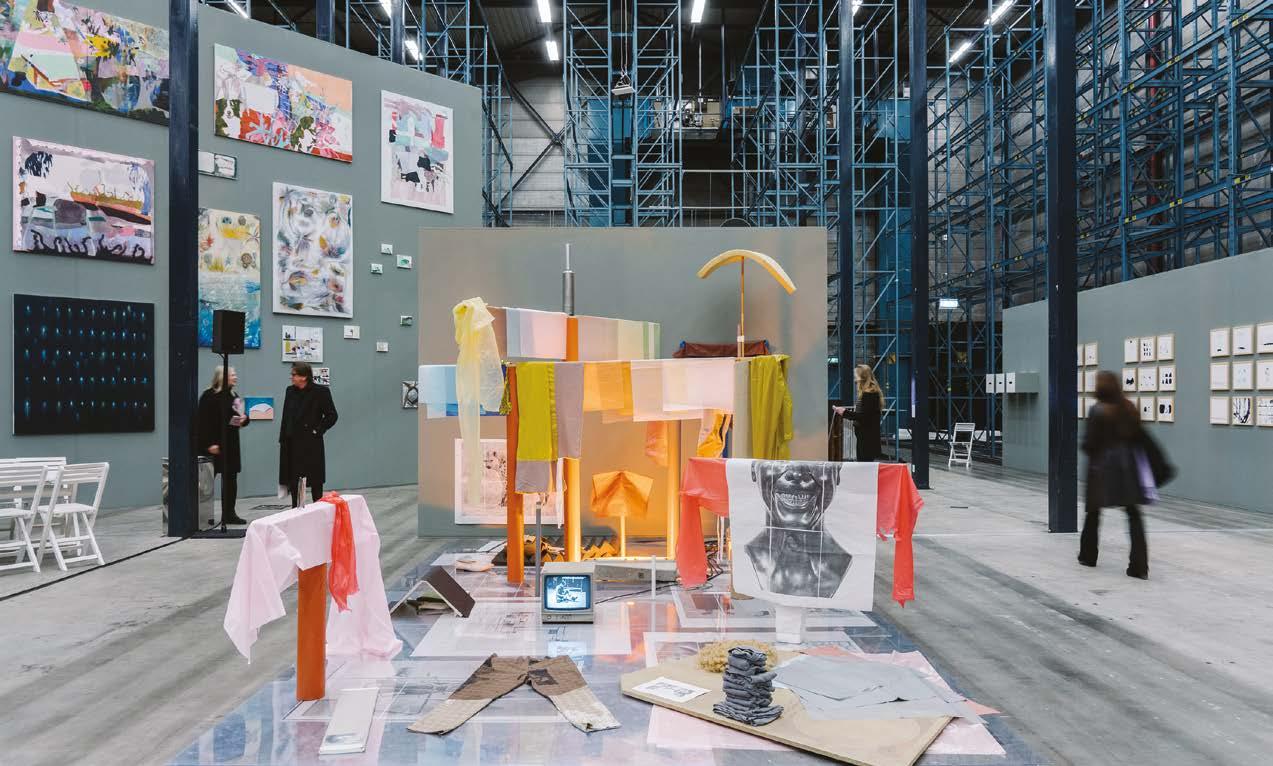
Art Rotterdam. Photo: Almicheal Fraay
Art Rotterdam 6-9 February, Rotterdam, the Netherlands Like every year, the vibrant city of Rotterdam welcomes the country’s cultural prodigies at its famous art fair. Renowned galleries present and provide a platform for young, promising artists to show their work to the grand public. Enjoy their refreshing and rebellious style and you might even end up buying one of their masterpieces. www.artrotterdam.com

Photo: Unsplash Bright Brussels. Photo: Visit.Brussels, Eric Danhier
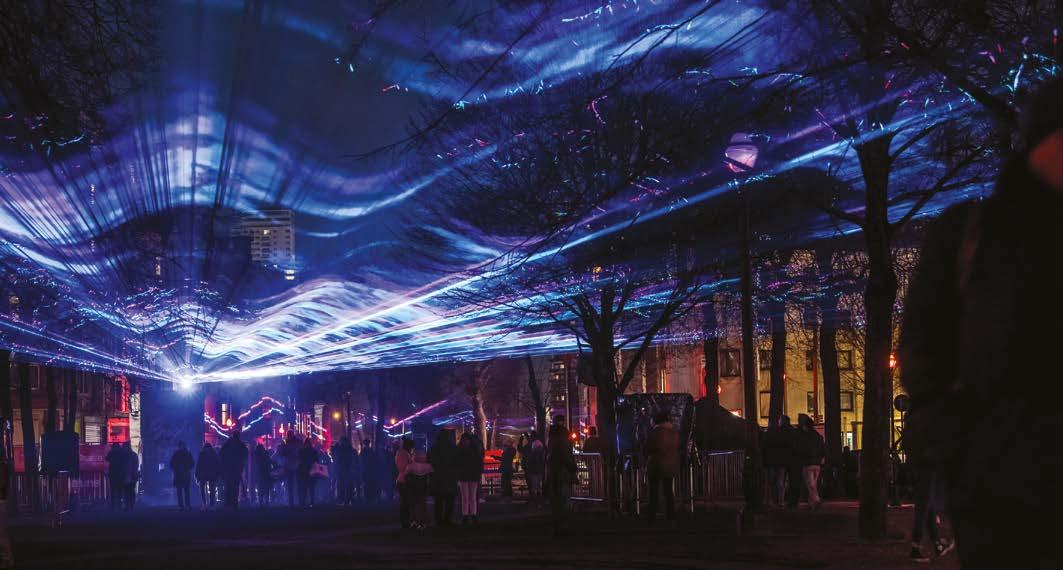
Wine Cheese Enjoy 8-9 February, Moselle, Luxembourg Few marriages are as strong as the one between wine and cheese. In the Luxembourgian wine Walhalla that is the Moselle region, they celebrate this match made in heaven with a weekend-long degustation. Drive through its beautiful landscape, try local wines and cheeses at its respective producers and unravel the story behind their spectacular flavour. www.visitmoselle.lu Bright Brussels 13-16 February, Brussels, Belgium Not even the infamous Belgian winter cold can keep the people of Brussels inside during Bright Brussels. Spread around the city, 23 extraordinary light installations await you and guide the way for a great winter walk. With the glowing route accentuating the façades of the city’s iconic – as well as well-hidden – monuments, it won’t only be the cold that gives you goosebumps. bright.brussels

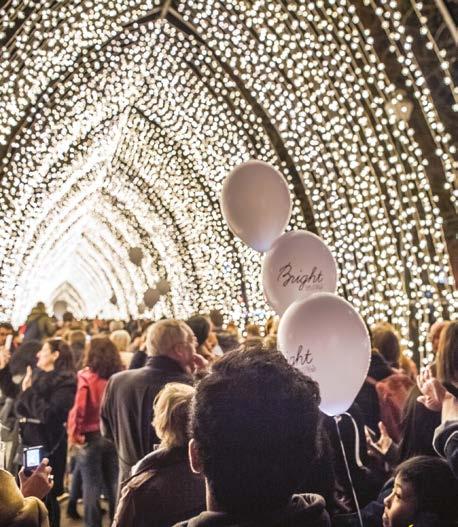
Salon du Chocolat 14-16 February, Brussels, Belgium 8,000 square metres of cacao pleasure: that is the best way to describe the annual Salon du Chocolat. Located in the capital of chocolate, it is no surprise that this is the best place to find the finest pralines, bars and cups of hot cocoa. Belgium’s greatest pastry chefs and chocolatiers will be present, as well as models running the catwalk in chocolate couture. brussels.salon-du-chocolat.com


Comic Con 22-23 February, Brussels, Belgium What the World Cup is to soccer fans, Comic Con is to film-, game- and comic-buffs. It is their annual shot to see a glimpse of their Hollywood heroes and to fraternise with like-minded fans. This year, the list of scheduled appearances is jam-packed with heroes from Hogwarts, the Shire, Westeros and a galaxy far, far away. Among many others, attendees will meet the actors behind Hogwarts’ caretaker Argus Filch, Hobbit Samwise Gamgee, priestess Melisandre and robots C-3PO, R2-D2 and BB-8. www.comicconbrussels.com
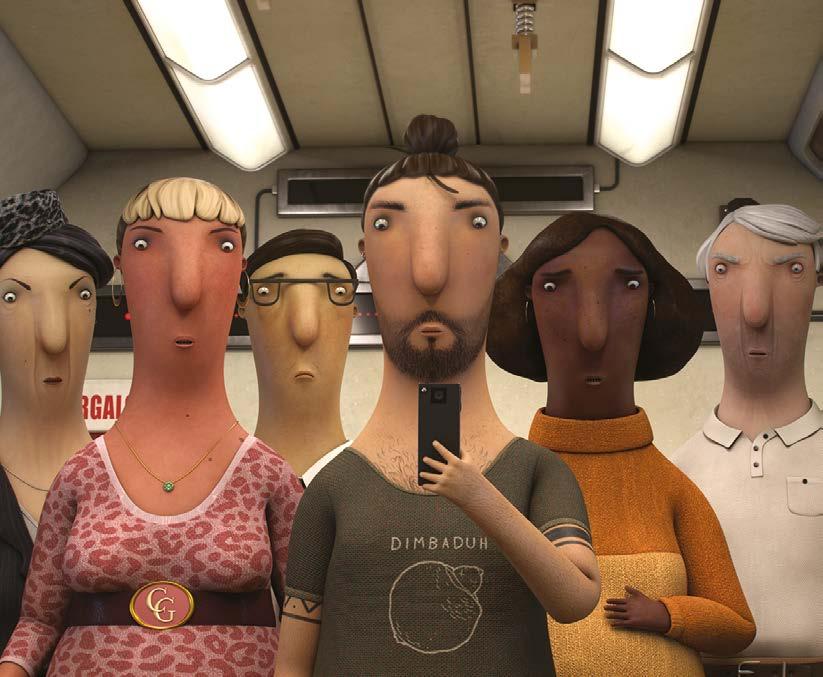
Carnival of Binche. Photo: Mich Verbelen
Carnival of Binche 23-25 February, Binche, Belgium Though carnivals come in all colours and sizes in the Benelux, few are as iconic as the one in Binche. Besides the colourful floats and costumes, the traditional ‘Gilles de Binche’ steal the show. Folklore states that these masked men with feathers on their heads and stuffed orange suits fertilise the soil again and scare away demons. In 2003, UNESCO added this whimsical parade to their list of intangible cultural heritages. www.carnavaldebinche.be
Photo: Carnival of Maastricht
Carnival of Maastrich t 23-25 February, Maastricht, the Netherlands The carnival of Maastricht is a full-option one. The three days of madness contain parades, floats, comedy, dances and – the biggest attraction of them all –‘de zatte hermeniekes’ (the drunk harmonies). These brass bands parade through the city from one pub to the next, guiding the partygoers to their next pitstop. Symphonies are often lost on them, since loudness overrules all artistic aspirations. The carnival even grants awards to those bands for playing the most ‘off-tone’. www.visitmaastricht.com
Carnival of Aalst 23-25 February, Aalst, Belgium Aalst is the home of ‘de voil jeanetten’, featuring grown men in trashy women’s clothing who often wear a lampshade on their head or push a stroller ahead of them. Together with the many satirical floats, they give shape to Belgium’s biggest carnival. Welcome to the temporary court of Prince Carnival. www.aalstcarnaval.be
Anima 21 February – 1 March, Brussels, Belgium Being the home of drawn superstars like Tintin and the Smurfs, Brussels loves all that’s animated. During the annual Anima festival, all eyes are pointed at the white screen and the fabulous creations which the world’s animators have created for it; in its traditional, long form as well in a series of over 50 short films during the animation night. This bingewatching session will keep you awake in your cinema seat until the early hours. www.animafestival.be
TEXT: STEPHANIE UWALAKA | PHOTOS: ACSE
Well known for its stunning 12th-century gothic cathedral, Strasbourg is also home to the Association des Courses de Strasbourg (ACSE), which organises races open to all.
Last year, the association attracted over 12,000 participants to its Strasbourg-Eurometropole running event, and one third of previous runners eagerly returned to the Strasbourg-Europe race. Although some participants are local, many attendees are from Alsace, Germany and further afield. The ACSE originally started in Strasbourg’s Office de Sport, but later evolved into an association. Its first run in 1980 had just 2,400 participants for a ten-kilometre run and marathon, but their races now gain great media attention with local press, television and radio. Aiming to raise the awareness for sustainable development, while involving local businesses and volunteers, the ACSE has made its 40th anniversary celebrations environmentally considerate. Not only will each bag of recycled waste plant three trees, biodegradable cups and Strasbourg water will be used, and runners are being encouraged to use public transport and eliminate paper by making contact online. The children’s European race in April will encourage an active lifestyle and exhibit such a lifestyle’s health benefits, which is one of the social aims of the Association. It also hopes to widen young people’s perspective of Europe through its partnership with the European Council.
To mark its 40th anniversary, the ACSE will have a party in May (Courses de StrasbourgEurométropole). To celebrate over the week


end, there will be entertainment, the option of running, walking or rollerblading the routes, and a special ‘Silver Run’ for seniors. The routes will run from Parc de l’Orangerie to Parc de la Citadelle through the historic streets of central Strasbourg back to the starting point. The ACSE wants to celebrate its long-standing races, the historical and cultural heritage of Strasbourg itself, and strengthen friendly ties with European neighbours across the border.
www.acse-strasbourg.eu www.coursesdestrasbourg.eu

Photo: Regionalverband, Eike Bock

Three countries, four cities, one experience
QuattroPole is a network of four cities across the borders of Germany, Luxembourg and France. Uniting Luxembourg, Saarbrücken, Trier and Metz, since 2000 it has aimed to promote historical, economic and cultural diversity, as well as active multilingualism. Located no more than an hour away from one another, the four cities constitute an area of dense artistic and cultural concentration, and this proximity makes Quattropole an ideal long-weekend destination for curious travellers. From Roman ru
TEXT: PIERRE ANTOINE ZAHND
ins to grand Baroque churches, wine fairs, Michelin-starred restaurants and richly adorned train stations, Quattropole may be one of Western Europe’s best-kept secrets.
Luxembourg – a city of contrasts at the heart of old Europe As an international banking centre and home to major European institutions, Luxembourg is known as a modern, future forward capital. The birthplace of Robert Schuman, a statesman who was instrumental in the consolidation of European unity, Luxembourg is now home to the Secretariat of the European Parliament, the European Court of Justice, and the European Investment Bank, among others. Discovering the ‘EU’ side of Luxembourg is easy, with walking tours such as the Luxembourg, a European Capital or Schuman Circular Walk circuits.
But the past has pride of place, too: the Old Town boasts a plethora of picturesque squares and charming alleyways. With long, stately boulevards as well as spacious public parks, the city easi
ly lends itself to being explored on foot. The so-called Wenzel Circular Walk is a scenic tour of the historic centre, and in an hour and a half takes visitors through the thousands of years that build the city’s past.
Poised between tradition and innovation, like the city itself, Luxembourg’s cuisine is up there with the best of its French neighbours. With numerous Michelin-starred establishments offering variations on regional specialties, Luxembourg also offers a tempting wine selection that includes the famous Riesling as well as the local Champagne: the Crémant de Luxembourg.
Saarbrücken – a major city on a human scale First-time visitors may not immediately realise the full status of Saarbrücken on a regional and national level. The state capital of the Saar is also home to the prominent Saarland University and constitutes the region’s economic hub, yet it remains a relaxed, friendly city. Saarbrücken’s modest size makes for a pleasant concentration of leisurely areas – picturesque squares, scenic alleyways and green spaces come aplenty in Germany’s smallest major city.
Architecture enthusiasts will doubtless visit the Ludwigskirche, one of Germany’s most notable Baroque churches (and that’s saying something). From there, a short stroll will take you the Saarbrücken Castle, a striking Baroque edifice with a history of evolution and transformation dating back to the 16th century. From there, you can cross the Alte Brücke toward the Park am Theater and take the scenic promenade back to the Bismarckbrücke (for culture lovers, the Saarlandmuseum’s Modern Gallery is right on the way).
Since a day or two of exploring may leave you hungry, Saarbrücken is also famous for its rich culture of food and drink, a unique hybrid of haute cuisine and hearty working-class food. Examples of local delicacies include Schwenkbraten (pork neck steak, marinated and grilled), Dibbelabbes (a potato paste-based dish
Photo: TTM
Photo: QuattroPole, Tom Gundelwein

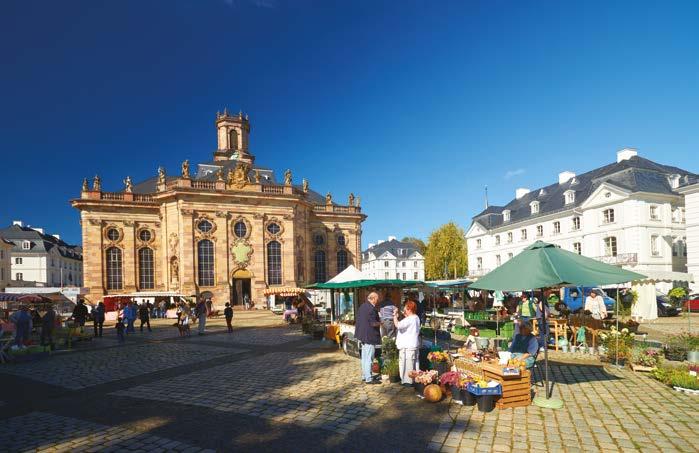

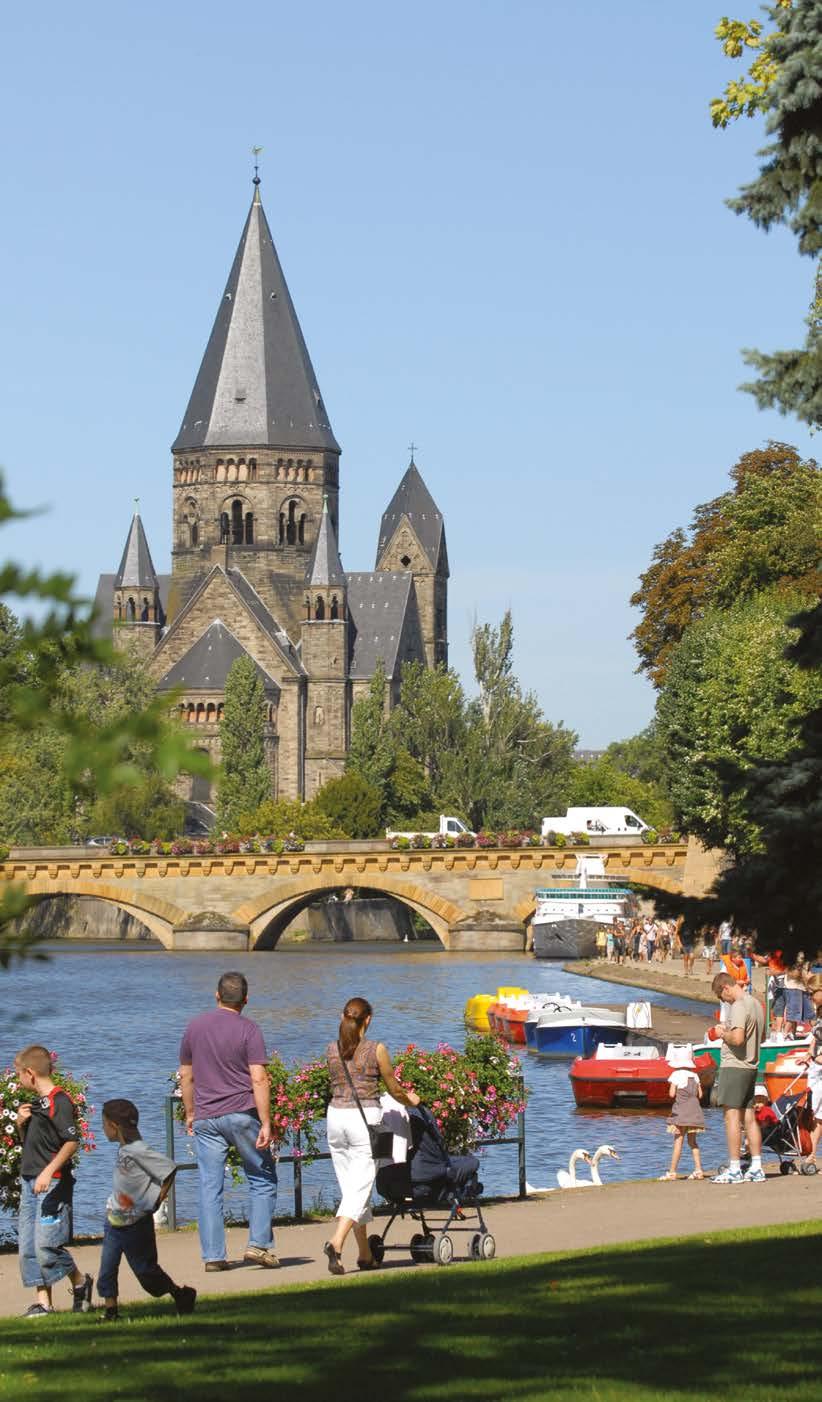
Trier – between Wine and UNESCO Sites According to historians, the south-western city of Trier is the oldest in present-day Germany. Ancient Rome, in fact, had a foothold in the region, and already occupied a much earlier version of the city. The impressive architectural testament of the Romans constitutes much of its appeal: the colossal Porta Nigra (Black Gate), erected in the second century, is the largest extant Roman gate north of the Alps. It is part of the Roman Monuments, Cathedral of St. Peter and Church of Our Lady in Trier’s UNESCO World Heritage Site. This site also comprises a second-century amphitheatre, three ancient bathing complexes and the oldest-standing bridge in Germany, also built by the Romans. The awe-inspiring St Peter’s Cathedral, built in the 13th century in the Roman Catholic style, was granted UNESCO status in 1986, along with the 23-metre Igel column.
Beyond its Roman heritage, Trier has become a compelling city in its own right. Its typically German historic centre, with quaint houses and vivid colours, is a spectacle for the eye. But a visit to Trier is also an opportunity to sample one of the region’s finest products: wine. Perhaps influenced by its Roman ancestry, Trier has become a local centre for the drink: with frequent public showcases attended by some hundred local wine-makers from the Moselle and Ruwer region, Trier is sure to titillate the taste-buds of oenologists and amateurs alike.
Metz – a feast for the senses Although not very famous internationally, Metz is one of France’s most aesthetically impressive cities. The city on the Moselle has harboured a dense cultural, architectural and musical heritage, and even a casual stroll around town can feel like embarking on a trip back a century or two. The 16th-century St-Etienne Cathedral, features not only a remarkable set of Gothic stained glass, but also evocative, dreamlike window designs by modernist painter Marc Chagall.

The Centre Pompidou-Metz art centre, by Japanese architect Shigeru Ban and Jean de Gastines, is one of Metz’s crowning jewels. Shigeru Ban, a Pritzker Architecture Prize recipient (one of the world’s premier architectural awards) designed the white museum roof in the shape of an Asian rice farmer.
The nearby Imperial District offers splendid examples of early 20th-century revivalist German architecture. Even the train station, almost a museum in itself, showcases a collection of various styles: from Romanesque, Gothic and Baroque to Art Deco and Art Nouveau.
Beyond the visual arts, Metz also has a reputation for the quality and scope of its classical music. Enthusiasts can indulge in the programme of the Opera-Théâtre (one of France’s oldest theatres) and the Cité Musicale-Metz, home to the prominent Orchestre National de Metz.
quattropole.org/en Facebook: QuattroPole










